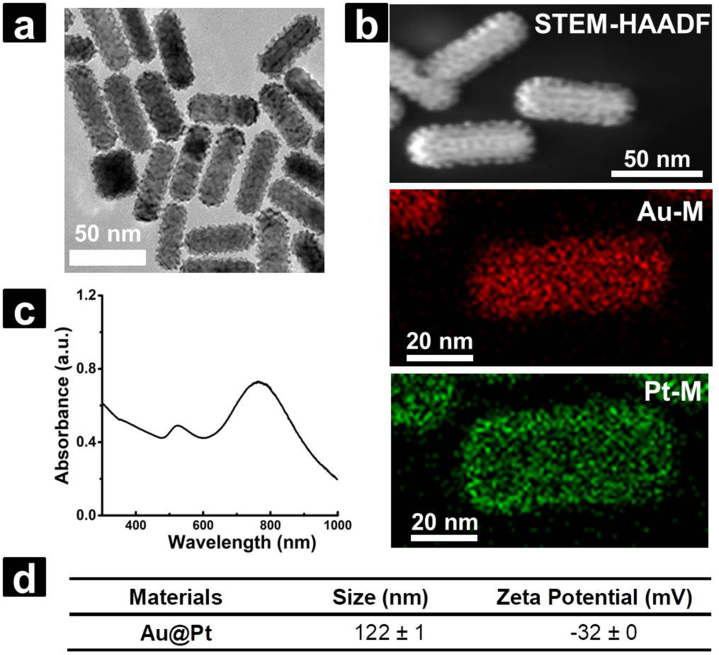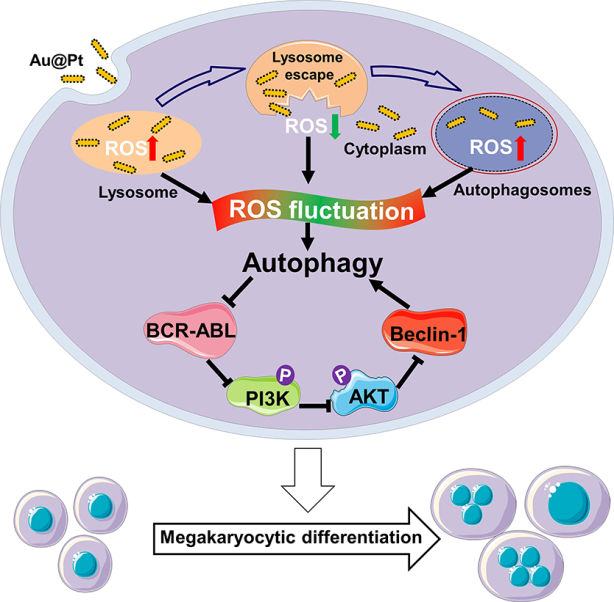
hotline:
17715390137
Tel/Wechat:
18101240246 (Technology)
0512-68565571
Email:mxenes@163.com (Sales Engineer)bkxc.bonnie@gmail.com
Scan the code to follow or search the official account on WeChat:
2D Materials Fronrier After paying attention,
click on the lower right corner to contact us,
Enter enterprise WeChat.
Professional Services Online

 There is an effective antioxidant defense system in the human body to ensure the bodys physiological homeostasis. The bone marrow hematopoietic related diseases are closely related to the imbalance of cellular reactive oxygen species (ROS). The regulation of ROS is a new way to develop more effective treatments.
There is an effective antioxidant defense system in the human body to ensure the bodys physiological homeostasis. The bone marrow hematopoietic related diseases are closely related to the imbalance of cellular reactive oxygen species (ROS). The regulation of ROS is a new way to develop more effective treatments.
Prussian blue nanozyme with multiple ROS scavenging function effectively induces terminal differentiation of erythroid
Anemia refers to a common clinical symptom in which the red blood cells of the human body are reduced below the lower limit of the normal range. General chronic anemia can be improved by adjusting diet and supplementing nutrients, but there are still some anemia symptoms that cannot be improved by nutrients, such as anemia caused by kidney disease and bone marrow abnormalities. This type of anemia is usually caused by the obstruction of erythroid differentiation of bone marrow hematopoietic stem cells. The formation of red blood cells involves a variety of strictly regulated steps (Figure 1), which are mainly divided into two stages: the first stage is called lineage selection, at which hematopoietic stem cells differentiate into erythroid under the action of erythroid differentiation-related cytokines Progenitor cells, injection of human erythropoietin (EPO) can alleviate the anemia caused by this stage of obstruction; the second stage is called terminal differentiation, at this stage erythroid progenitors form mature red blood cells, this stage is not regulated by EPO, Therefore, the anemia caused by this stage of obstruction cannot benefit from EPO treatment, and most of them develop into refractory anemia. In severe cases, blood transfusion is needed to improve symptoms. There is no inducer for this stage. Therefore, it is urgent to provide these patients with new Medication options.

Figure 1. Erythroid differentiation process (adapted from Reference 1)
In the process of terminal differentiation, cells need to synthesize large amounts of hemoglobin, so iron supplementation plays a vital role in terminal differentiation. In addition, in the process of normal terminal differentiation, reactive oxygen species (ROS) in cells need to be gradually reduced, so cells with abnormally elevated ROS cannot achieve terminal differentiation. Therefore, the elimination of ROS is also an important factor in completing terminal differentiation. Prussian Blue (Fe4[Fe(CN)6]3, Prussian Blue, PB) has a high iron content and good biological safety. The research group of Professor Zhang Yu from Southeast University reported the synthesized Prussian blue nanozyme ( PBNPs) have superoxide dismutase, peroxidase, and catalase-like properties, and can effectively eliminate ROS in cells. Based on the above two characteristics of PBNPs, the research group of Professor Xu Haiyan and Professor Zhang Yu of the Institute of Basic Medicine of the Chinese Academy of Medical Sciences collaborated to study the effect of PBNPs on cell differentiation. Studies have shown that PBNPs can be taken up by erythroid differentiation model cells K562 and localized in the cytoplasm. PBNPs exert antioxidant enzyme activity in cells, effectively reducing intracellular ROS; and iron in PBNPs can be stored by cells in the form of ferritin, thereby providing iron required for terminal differentiation. Therefore, the elimination of ROS and iron supplementation by PBNPs jointly promoted the terminal differentiation process of K562 cells: After PBNPs treatment, the late differentiation marker GYPA (CD235a) of K562 cells was up-regulated, and the early differentiation marker TFRC (CD71) decreased. At the same time, the cell size becomes smaller (Figure 2). This research work is expected to provide new solutions to the plight of no medicines for anemia caused by terminal differentiation, and provide new drug options for patients with refractory anemia. The above work was published in Nanoscale. Professor Xu Haiyan from the Institute of Basic Medicine, Chinese Academy of Medical Sciences and Professor Zhang Yu from Southeast University are the co-corresponding authors of the paper. Postdoctoral fellow Wang Tao and doctoral student Dong Haijiao are co-first authors.

Figure 2. Prussian blue nanoparticles induce terminal differentiation of erythroid
Ultra-small platinum nanoparticles induce myeloid leukemia cells to differentiate into megakaryocytes
Platinum nanoparticles have various enzymatic activities such as oxidase, peroxidase, catalase and superoxide dismutase, and are environmentally dependent. Chronic myeloid leukemia (CML) is a blood tumor with delayed differentiation and uncontrolled proliferation of hematopoietic cells caused by the presence of the fusion protein BCR-ABL. Although the emergence of tyrosine kinase inhibitors (such as imatinib) has revolutionized the treatment of CML, nearly 30% of CML patients still cannot benefit from it due to the occurrence of drug resistance. Professor Xu Haiyan’s research group and Professor Han Bing from the Department of Hematology of Peking Union Medical College Hospital designed and synthesized a core-shell structure (Au@Pt) with ultra-small platinum particles (about 3 nm in size) deposited on the surface of gold nanorods (pictured) 3) This structure is beneficial to improve the enzyme-like catalytic activity of platinum nanoparticles. Studies have found that Au@Pt can be taken up by K562 cells into the lysosome, and ROS is increased by exerting peroxidase-like activity; after escaping from the lysosome, it can exert hydrogen peroxide-like hydrogen peroxide in the neutral cytoplasm The activity of enzymes reduces the level of reactive oxygen species in cells, which causes temporal and spatial-dependent fluctuations in ROS levels. The fluctuation of ROS triggers autophagy, which increases the level of autophagy protein Beclin-1, which leads to the degradation of the key fusion protein BCR-ABL that delays differentiation, which in turn triggers the down-regulation of phosphorylation levels of PI3K and AKT. These effects form a positive feedback and drive CML cells to differentiate into mature megakaryocytes (Figure 4). The above effects have also been verified on bone marrow mononuclear cells derived from CML patients, proving that Au@Pt has clinical application potential.

Figure 3. Au@Pt characterization (a) TEM image, (b) element mapping image, (c) ultraviolet-visible-near infrared (UV-vis-NIR) extinction spectrum, (d) dynamic light scattering (DLS) ) Measured average hydrated particle size and surface potential

Figure 4. The mechanism of Au@Pt inducing CML cells to differentiate into megakaryocytes by exerting a variety of enzyme activities to regulate intracellular ROS fluctuations
The above work was published in Biomaterials Science (inside back cover) and was rated as a Hot article. Professor Xu Haiyan from the Institute of Basic Medicine, Chinese Academy of Medical Sciences is the corresponding author of the paper, and assistant researcher Wen Tao and doctoral student Yang Aiyun are the co-first authors of the paper.
The above two studies were funded by the National Key Research and Development Program, the National Natural Science Foundation of China, the Chinese Academy of Medical Sciences and the Health Science and Technology Innovation Project. Thank you.
references
[1] Dzierzak, E.; Philipsen, S., Erythropoiesis: Development and Differentiation. Cold Spring Harb. Perspect. Med. 2013, 3 (4), 16.[2] Wang, T.; Dong, H.; Zhang , M.; Wen, T.; Meng, J.; Liu, J.; Li, Z.; Zhang, Y.; Xu, H., Prussian blue nanoparticles induce myeloid leukemia cells to differentiate into red blood cells through nanozyme activities . Nanoscale 2020, 12 (45), 23084-23091. [3] Wen, T.; Yang, A.; Wang, T.; Jia, M.; Lai, X.; Meng, J.; Liu, J. ; Han, B.; Xu, H., Ultra-small platinum nanoparticles on gold nanorods induced intracellular ROS fluctuation to drive megakaryocytic differentiation of leukemia cells. Biomaterials Science 2020, 8 (22), 6204-6211.

| Reminder: Beijing Beike New Material Technology Co., Ltd. supplies products only for scientific research, not for humans |
| All rights reserved © 2019 beijing beike new material Technology Co., Ltd 京ICP备16054715-2号 |